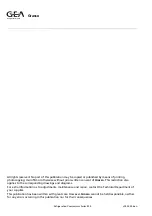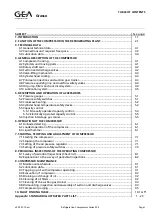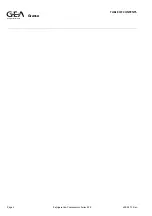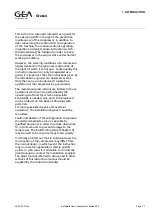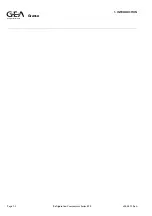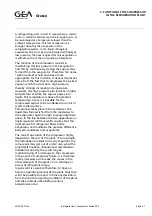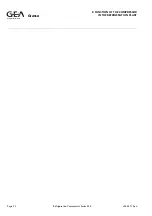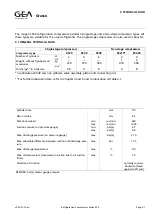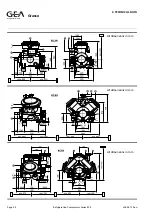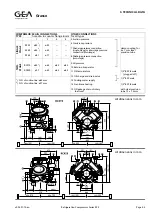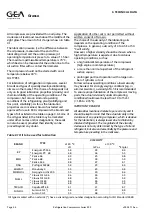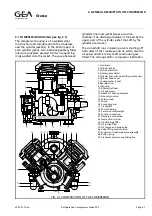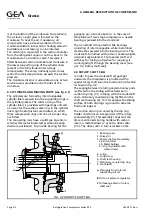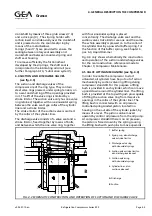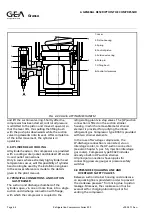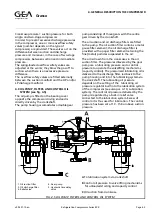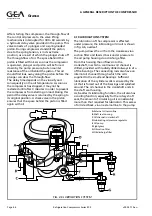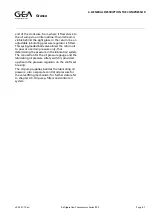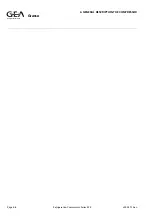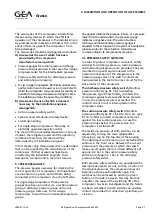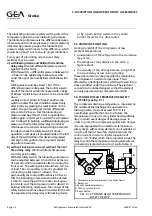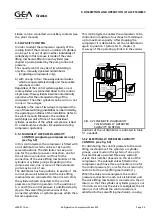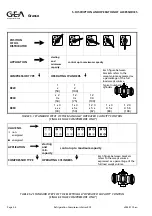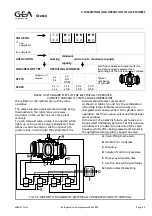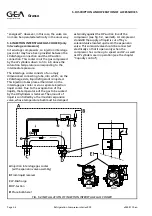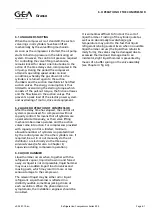
All compressors are provided with an oil pump. The
crankcase oil level must reach about the middle of the
sight glass. The amount of oil charge is shown in table
3.1.
The lubrication pressure (i.e. the difference between
the oil pressure, measured at the end of the
lubricating circuit and the suction pressure) at
operating temperature is pre-set at a value of 1.5 bar.
The maximum permissable oil temperature is 70 °C,
which best can be measured at the suction line to the
oil suction filter with a contact thermometer.
The compressor should not be started with an oil
temperature below 40 °C.
OIL TYPES
For lubrication of refrigeration compressors, several
brands and types of specially developed lubricating
oils are on the market. The choice of oil depends not
only on its good lubrication properties (viscosity) and
chemical stability at the operating conditions of the
compressor, but also on kind and operating
conditions of the refrigerating plant (solidifying and
floc point, solvability). As far as the lubrication
properties are concerned, Grasso has tested and
approved for use in RC9- compressors the brands and
types of oil as listed in the table on page 3.4. Some of
the oil types listed in the table may be marketed
under other names and/or designations; these oils
can also be used, provided their identity can be
proved beyond any doubt.
Application of other oils is not permitted without
written consent of Grasso.
The choice of the viscosity of the lubricating oils
depends on the operating conditions of the
compressor. In general, a viscosity of 4 to 4.5 E at 50
°C will satisfy.
However, a higher viscosity should be chosen when a
high oil temperature is expected, due to arduous
operating conditions, such as:
•
a high ambient temperature of the compressor
(high engine room temperature)
•
a more than normal superheat of the refrigerant
suction vapour;
•
prolonged part load operation with a large num-
ber of cylinders cut out
For less arduous operating conditions a lower viscosity
may be used. For strongly varying conditions (e.g. in
summer & winter), a viscosity of 4.5 E is recommended.
To ensure proper lubrication of the compressor moving
parts, the actual oil viscosity under all operating
conditions should never be less than 10 to 15 cSt
(= 1.85 to 2.35 °E).
IMPORTANT REMARK!
All viscosities mentioned relate to pure oil only and it
should be kept in mind that the actual viscosity in the
crankcase of an operating compressor, which is decisive
for the lubrication, is always lower due to dilution by
dissolved refrigerant. The magnitude of the viscosity
decrease is not only determined by the type of oil and
refrigerant, but also and essentially by the pressure and
temperature prevailing in the crankcase.
Table 3.1 Oil to be used for lubrication
TYPE
VISCOSITY
BRAND
at 40
o
C
at 50
o
C
cSt
mPa.s
o
Engler
BP
Energol LPT-F46
* Energol LPT-
F
68
54
68
29
36
4.4
5.5
ESSO
* Zerice 46
* Zerice 68
* Zerice S 46
43
63
48
25
34
27
3.8
5.0
4.1
FINA
Purfrigol MP 68
54
29
4.4
KUWAIT
Stravinsky C
55
29
4.4
MOBILOIL
Gargoyle Arctic 300
55
30
4.6
SHELL
* Clavus Oil G 46
* Clavus Oil G 68
* Clavus Oil 46
* Clavus Oil 68
46
68
46
68
26
35
26
35
3.9
5.4
3.9
5.4
TEXACO
Capella WF 68
61
31
4.7
SUN-OIL
Suniso 4 GS
1
)
Suniso 5 GS
54
95
29
48
4.4
7.1
Oil types marked with an asterisk (*) have a viscosity grade number designation according to ISO Standard 3448.
Refrigeration Division
Grasso
3. TECHNICAL DATA
Page 3.4
Refrigeration Compressors Series RC9
v002.97.10.en


